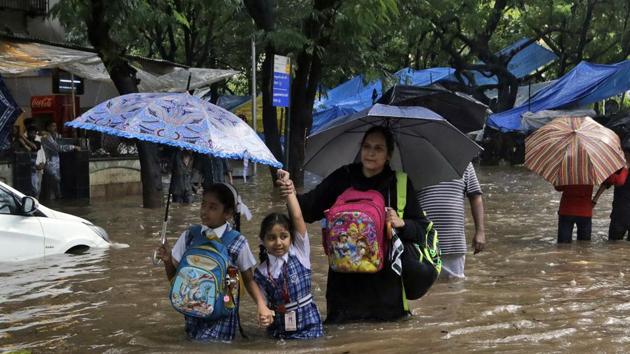Don’t link climate change to increasing costs of disasters
Instead of doing this, India must invest both in smarter policies and more poverty reduction to reduce the impacts of future floods.
While the world focuses on the devastating storms in South Asia and the US, it is timely to ask ourselves two broad, related questions. First, how do we prevent such disasters from being so devastating in the future? And second, how do we best help the vulnerable people who are most affected?

When big weather events happen, often the first thing talked about is climate change. Perhaps it’s a matter of trying to pin blame for a natural disaster. “South Asia is also suffering the horrors of climate change” was one recent American headline.
This claim has some justification, but ultimately points us in the wrong direction. Despite the devastation of recent weeks, it is incorrect to link the increasing costs of disasters with the emission of greenhouse gases. The UN, in its latest extreme weather report, found that losses adjusted for population and wealth “have not been attributed to natural or anthropogenic climate change” and “the absence of an attributable climate change signal in losses also holds for flood losses.” This does not mean that climate change caused by humans is not real or of genuine concern. But it means that many commentators and campaigners — and even journalists—seem to ignore these relevant scientific findings.
This matters, because if we want to limit future flooding damage, global carbon cuts are a very poor method. Even if carbon cuts like those promised between now and 2030 in the Paris Treaty are successful, they would reduce heavy rain increases by a tiny fraction.
The lesson from the US and around the world is that a much more effective policy is to look at where societies are allowing construction to take place. Unabated construction on flood plains and coastal areas mean that there are more people at risk. And urban planners paving over floodplains and denuding forests make matters worse. A city with lakes, ponds, and open spaces is not only more pleasant, but it is better prepared, because all of these features allow water to drain away.
Many affected cities have poor drainage and outdated storm water systems that clog with debris and rubbish. This—and a lack of pumping stations and floodgates—make cities more vulnerable to flooding. And having poor or no early warning systems means that people aren’t given the information they need to help them escape.
The majority of deaths in Mumbai’s floods occurred in shanty town slums. Indeed, it is a cruel reality that natural disasters often afflict the poorest the most. The elderly, the ill, and the ultra-poor are more likely to be living in improvised, unregulated housing, and less able to escape quickly with their belongings. Put very crudely, it could be said that the poorer a community, the bigger the damage from natural disasters.
This means that Indian efforts to reduce poverty are also an “anti-flooding” measure in themselves. Flood death rates both in India, Asia and globally are declining, because less poverty is making people less vulnerable. Over the past half century, the flood death rate in India has almost halved: in the 1960s, India saw 2.1 flood deaths per million people per year, whereas 2010-16 has seen 1.1 deaths, the lowest yet.
So while we definitely need to address policy issues of flood infrastructure, planning, and disaster preparedness, another – and possibly even more effective – policy needs to be considered: How to continue making society’s most vulnerable better-off.
A vast amount of state and national spending as well as international development funds are devoted to this purpose. Tools like cost-benefit analysis can help prioritise the policies that will have the biggest absolute impact for a city, state or nation.
At a global level, we already have some clear answers on how to lift people out of poverty. Copenhagen Consensus commissioned dozens of economists to study the international development agenda and identify the approaches that would make the biggest impact for every dollar, pound or rupee spent.
A panel of Nobel laureate economists identified 19 phenomenal policies that would be transformative. Among these, achieving universal access to contraception and family planning and cutting tuberculosis by 90% would save many lives. Ending fuel subsidies (which cost India $16.9 billion a year in 2013 and 2014) would be good for the environment and free up public funds. And introducing freer global trade would, in the longer term, have the biggest impact on poverty.
It is understandable that we focus on the immediate response to disaster. The rebuild is going to take a considerable amount of time and resources. But we also need to look at the bigger picture, and invest both in smarter policies and more poverty reduction to reduce the impacts of future floods.
Bjorn Lomborg is president, Copenhagen Consensus Center and Visiting Professor at Copenhagen Business School.
The views expressed are personal



